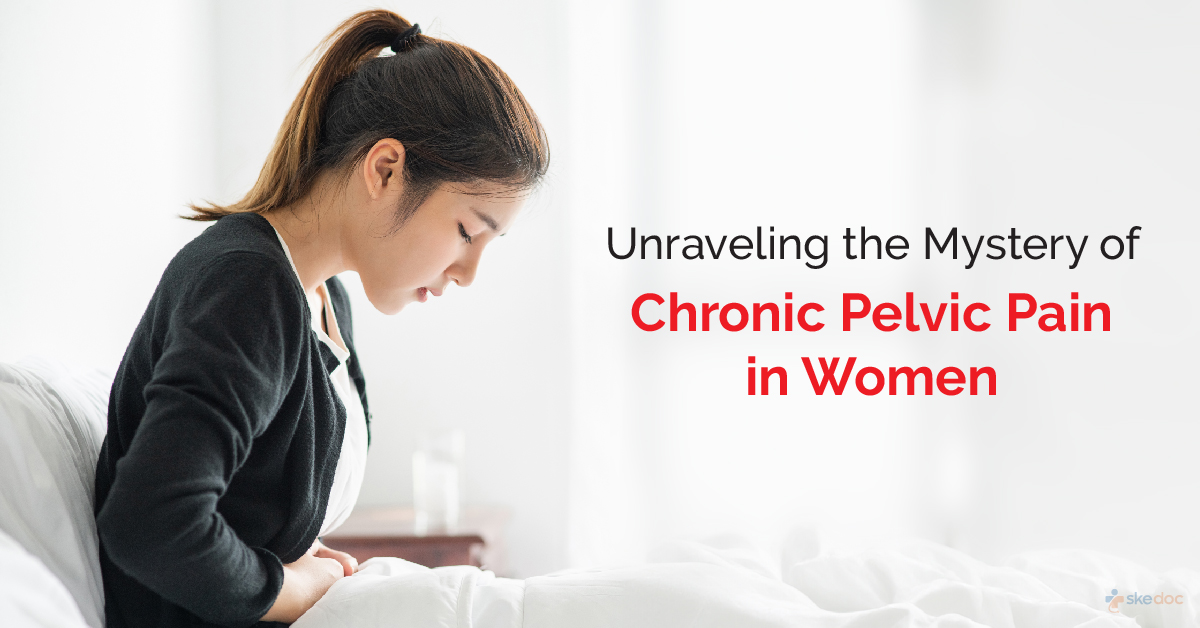Allergy
Blood Diseases
Bone & Joints
Brain
Cancer
Child Care
Cosmetic Surgery
Diabetes
Endocrinology
ENT
Eye
Gen Medicine
General Surgery
Heart
Kidney
Lifestyle
Liver & Digestive
Lung
Men’s Health
Mental health
Physiotherapy
Rheumatology
Skin and hair
Sleep Disorders
Spine
Transplant
Women Health
Thyroid
Vascular Surgery
Chronic Pelvic Pain in Women - Symptoms, Causes and Treatment

Chronic pelvic pain in women is an enigmatic condition that plagues the lives of countless individuals. It's a persistent discomfort below the belly button for six long months or more. But fear not, for we're here to delve into the depths of this ailment and shed light on its intricacies.
Is this a medical emergency?
Let's begin by reassuring you that, though distressing, chronic pelvic pain is not an emergency. It's a hurdle that many women face, but with the proper knowledge and care, it can be managed effectively.
Unmasking the Culprits
Now, what causes this perplexing pain? It's a blend of factors, a symphony of ailments that can affect the reproductive, digestive, urinary, and musculoskeletal systems. Here's a quick rundown of the notorious suspects:
- Endometriosis
- Uterine fibroids
- Pelvic inflammatory disease
- The scar tissue from prior surgeries or infections
- Irritable bowel syndrome
- Interstitial cystitis
- Diverticulitis
- Fibromyalgia
- Pelvic floor pain
- Muscular, joint, or ligament issues in the pelvic region, lower back, and hips
- The haunting specter of physical, sexual, or mental abuse
Unveiling the Risk Factors
Certain factors heighten the risk of experiencing chronic pelvic pain:
- Pelvic injuries or trauma
- Gynecological woes like endometriosis or fibroids
- Musculoskeletal problems such as pelvic floor pain or fibromyalgia
- History of sexual abuse
The Symphony of Symptoms
Symptoms of chronic pelvic pain are diverse, and each woman's experience is unique. They may include:
- Persistent severe pain or intermittent discomfort
- Sharp stabs or lingering dull aches
- A sense of deep-seated pressure and heaviness
- Pain during intimacy, bowel movements, or urination
- Unpleasant sensations while sitting or standing for extended periods
The Trail of Investigations
Unraveling the mystery of chronic pelvic pain involves a series of investigations:
- A thorough review of medical history, both past and familial
- A pelvic examination encompassing the abdomen, lower back, hips, and pelvis
- Laboratory tests to detect infections or sexually transmitted diseases
- Pregnancy testing
- Pelvic ultrasound to identify lurking masses or cysts
- Imaging tests like abdominal X-rays, pelvic CT scans, and MRIs
- Laparoscopy for an intimate look at internal structures
Cracking the Diagnosis Code
The diagnosis of chronic pelvic pain hinges on symptom review and investigation results. It's like piecing together a complex puzzle, one step at a time.
The Healing Path: Treatment Options
Treatment strives to address the root cause, but when that's elusive, it aims to alleviate pain and restore quality of life.
A. Medical Treatment
- Pain relief through medications like ibuprofen, acetaminophen, or naproxen
- Hormone treatments or birth control pills to address hormonal imbalances
- Antibiotics to combat infections
- Antidepressants to ease pain and discomfort
B. Interventional Treatment and Surgery
- Laparoscopic surgery to tackle endometriosis and other culprits
- Hysterectomy to remove problematic uterine abnormalities
- Other interventions like spinal cord stimulation and trigger point injections, depending on the cause
C. Radiation Therapy
In some cases, radiation therapy may be explored as an option.
Diet, Exercise, Lifestyle, and Prevention
Non-medical approaches can complement treatment:
- Psychotherapy for managing depression, abuse trauma, or personality disorders
- Physical therapy, including pelvic floor exercises and relaxation techniques
- Lifestyle adjustments: Say no to excessive tobacco, alcohol, caffeine, and spicy foods. Say yes to heating pads, relaxation techniques, and maintaining a healthy weight.
Navigating the Shadows: Complications
Chronic pelvic pain casts a long shadow, potentially leading to:
- Sleep disturbances
- Reduced physical activity
- Difficulty exercising
- Prolonged sitting or standing discomfort
- Elevated anxiety and stress levels
The Ray of Hope: Prognosis
The outlook depends on the underlying cause. Most women find relief through treatment, with chronic pelvic pain becoming a distant memory.
Seeking Guidance
If your pelvic pain persists and disrupts your life, don't hesitate to seek medical guidance. Your well-being matters, and there are solutions to explore.
Hospitalisation Hints
Hospitalisation is typically reserved for cases where surgical intervention is required to address the underlying cause of pelvic pain.
Who to Consult?
The path to healing often involves consultation with specialists from:
- Obstetrics and Gynecology
- Pain Medicine
In summary, chronic pelvic pain is a complex puzzle, but it can be solved. With the right approach, the pain can subside, and life can return to its joyful rhythm.
Was this article helpful?
YesNo




